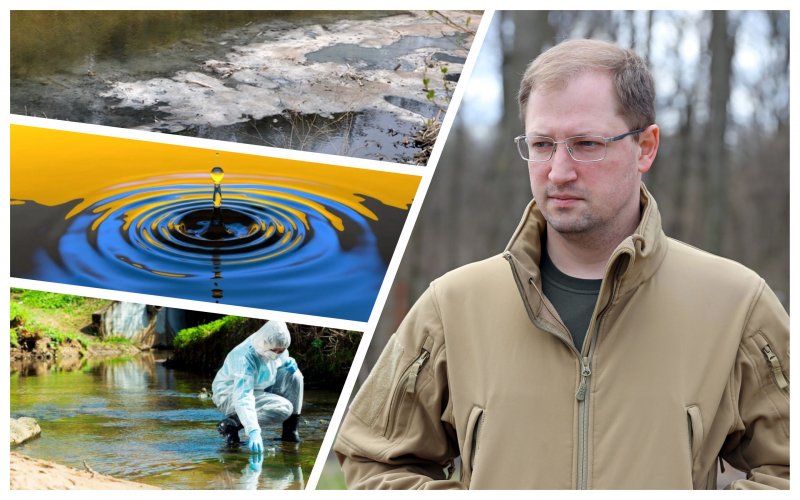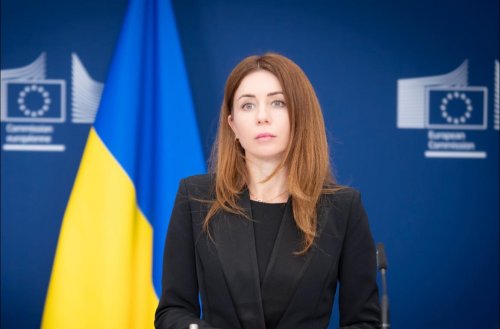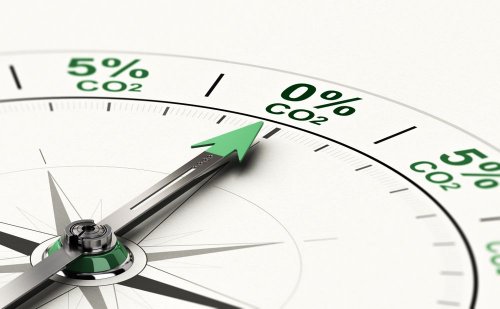In the Regulation on the Ministry of Environmental Protection and Natural Resources of Ukraine, a wide range of tasks was prescribed for this body. Among them, in particular, ensuring the formation of state policy in the areas of rational use, reproduction and protection of natural resources; protection and rational use of land; control over the use and protection of water, reproduction of water resources and others. The relevant areas are listed among the priorities of the Ministry of Environment and on its official website. What is the ministry doing to fulfill its tasks and what is the effect of its steps?
To find out, EcoPolitic is launching a series of materials, and we will start it with the work of the Ministry of Environment in the field of water resources protection.
State of water resources of Ukraine
War leaves its mark on all natural systems, in particular it causes irreparable damage to water bodies. According to the monitoring data of the Ministry of Environment, as a result of active hostilities since February 24, 2022, water resources were damaged in the amount of UAH 19 million. All these losses are carefully calculated and in the future must be covered by Russia as an aggressor state.
But unfortunately, Russia is not our only pest at the moment. No less damage to water resources is caused by management, which, due to the lack of deterrent factors, becomes massively unscrupulous.
Ukraine is one of the countries with limited water resources. Only 4% of our territory is occupied by water bodies. We are ranked 32nd out of 40 European countries by this indicator. But even this limited resource we cannot fully use due to the high level of pollution. The intensive influx of harmful substances into underground aquifers has led to the fact that the number of centers of their pollution has increased more than fourfold in the last 20 years alone.
According to pre-war statistics, housing and communal services were officially singled out among the main water polluters with a share in the total pollution system of 77%, industry – 22%, and the last step for some reason was allocated to agriculture – 0.5%.
Why is pollution so active?
As candidate of geographical sciences, expert on water resources protection, head of the committee on water resources protection, water governance and eco-modernization of the water sphere of PAEW Maryana Ginzula says, the high level of pollution of Ukrainian waters from economic activities persists, first of all, due to the complex legacy of water fund exploitation before independence.
"During the Soviet period, such a system as direct discharge into water bodies without treatment was implemented. Treatment at that time was technically absent in such a political entity as the Soviet Union. As a result, we got the complex baggage that we carry today. The system they built management began to change only after the 2000s," says Maryana Ginzula.
Another problem, according to the expert, is that due to the large area of the country, the distribution of water resources in Ukraine is not uniform. The least number of them is in the territory where economic activity was most active – in the east of the country. As a result, water bodies in this part of Ukraine are maximally polluted and are slowly being cleaned.
Currently, the discharge of improperly treated sewage into surface waters is still the system rather than the exception. According to the report of the State Environmental Inspection on the results of 2022, the total amount of damage to water resources calculated by the department amounted to almost UAH 42.8 million. It is about losses from economic activity. Pay attention, even they are twice as large as from combat. But this amount is far from a complete picture of the damage.
Let's focus separately on agriculture. According to the FAO, this type of activity is the main source of water pollution on the planet in general. In Ukraine, officially, as we noted above, it occupies the last place in the list of pollutants. Why did such an imbalance occur? Is our agriculture so ecologically friendly? Actually no. Unfortunately, we simply do not properly record damage from agricultural activities.
Calculating the real amount of pollution is complicated by the specifics of water use in agriculture. In addition, some agrochemicals are regularly washed off the fields into reservoirs with surface or underground water runoff. As a result, state and public monitoring constantly shows an excess of nitrates, phosphates and pesticides in water bodies, but the reason itself is very difficult to fix.
In February 2021, the Ministry of Environmental Protection and Natural Resources of Ukraine showed the results of the screening of the Dnipro basin. He discovered many toxic chemicals for agricultural use, including those that were banned back in the 60s of the 20th century. One of the substances (carbendazim) was present in almost every second water sample. For another (atrazine), which belongs to the priority substances for water pollution monitoring in the EU, an excess of the safe level was recorded.
As agriculture becomes more intensive year by year, it uses more and more fertilizers, accordingly, the situation without state intervention and proper control will only worsen.
What about control and responsibility?
Cases of mass pollution of water bodies are recorded every year in Ukraine. For example, on December 24, 2022, there was a large-scale spill of oil products into the Dniester River near Gadyach in the Lviv region.
In September 2020, ecologists sounded the alarm because the Buzky estuary was covered with a green film, and the content of dangerous substances in the water became excessively high. At that time, the enterprises located in the bay – the sea port and the ship repair plant – became suspicious.
In October 2019, activists filmed a large-scale discharge of pink sewage from the Volodymyr-Volyn poultry farm.
And there are dozens of such cases in every region. Unfortunately, there are far fewer cases of damages for pollution.
Experts claim that the requirements for waste water and the arrangement of coastal strips are clearly prescribed in the Ukrainian environmental legislation, but in practice they do not work. After all, in addition to the rules, there should also be a control system, which still leaves much to be desired.
Experts claim that the requirements for waste water and the arrangement of coastal strips are clearly prescribed in the Ukrainian environmental legislation, but in practice they do not work. After all, in addition to the rules, there should also be a control system, which still leaves much to be desired.
The situation with the control of pollution from agricultural activities is even more difficult. If polluted effluents from industrial facilities can at least be recorded and, using leverage, encourage the enterprise to clean them properly, then pollution from agriculture is spontaneous and almost imperceptible. Dangerous compounds, which are used to treat the fields, seep into the soil, then enter the groundwater, with which they already end up in the nearest wells and reservoirs. This makes water unsafe for consumption in entire regions. Even the largest agrarians of Ukraine do not have information on their websites about what they are doing to reduce the pollution of the environment, primarily reservoirs and water resources.
What is the Ministry of Environment doing at this time?
The Ministry of Environmental Protection is a key body on which the environmental policy of our country depends. Accordingly, he has the most leverage over the situation. On the official website of the Ministry of Environment, it regularly reports on its activities in the area of water resources protection, on the improvement of regulatory acts in this area, and publishes tracking of the effectiveness of its regulatory acts. But in the end, all this is stomping in place, which does not give practical results. And the reforms, which should have a significant impact on the situation with water pollution, have been delayed for years.
Let us recall the reform of the State Environmental Inspection, which should ensure effective control over the implementation of environmental legislation, particularly in the water sector. It was promised to be held before the end of 2020, but now it has fallen off the agenda altogether. Draft Law No. 3091 "On State Environmental Control" never reached the second reading.
Still preparing for the first reading:
- Draft Law on amendments to certain legislative acts of Ukraine on deregulation of economic activities in the field of water management development (No. 7346).
- Draft Law on amendments to certain legislative acts of Ukraine on the protection and preservation of particularly valuable areas of natural water bodies and watercourses (No. 5413).
- Draft Law on amendments to certain legislative acts of Ukraine on ensuring environmental safety of water use (No. 8363).
In addition, in accordance with the Association Agreement with the EU, Ukraine undertook to implement the requirements of six water Directives:
- Directive 2000/60/EU on establishing the framework of the Community's activities in the field of water policy;
- Directive 2007/60/EC on flood risk assessment and management;
- Directive 2008/56/EU on the establishment of a framework for Community activities in the field of environmental policy in relation to the marine environment;
- Directive 91/271/EU on urban wastewater treatment;
- Directive 98/83/EC on the quality of water intended for human consumption;
- Directive 91/676/EC on the protection of waters against pollution caused by nitrates from agricultural sources.
None of these directives are currently fully implemented, and some do not even have a defined implementation plan.
Let us emphasize that the very provisions of Directive 91/676/EC, the so-called Nitrate Directive, should create a system of control over pollution from agriculture, which we are already critically lacking.
The only positive point is the Ministry's development and approval of the Water Strategy for the period up to 2050. But, unfortunately, she also received a number of comments from the expert community.
While the Ministry of Environment is waiting for some miracle. Real activists on the ground are taking the real business of water purification into their own hands. For example, three years ago, Artem Pryhodko from Kharkiv got tired of watching tons of garbage floating in the Uda River, so together with like-minded people, they cleaned the river and installed a garbage collector. Other communities could use the same "recipe" and, under the conditions of grant support, even introduce larger-scale cleaning initiatives. But then the question arises, if only active citizens will be engaged in cleaning water bodies, then why should they additionally finance the work of an entire specialized Ministry from their own pockets? And the question is still unanswered.





